Night Stalker MH-60 Black Hawk Spotted In Blue Camouflage
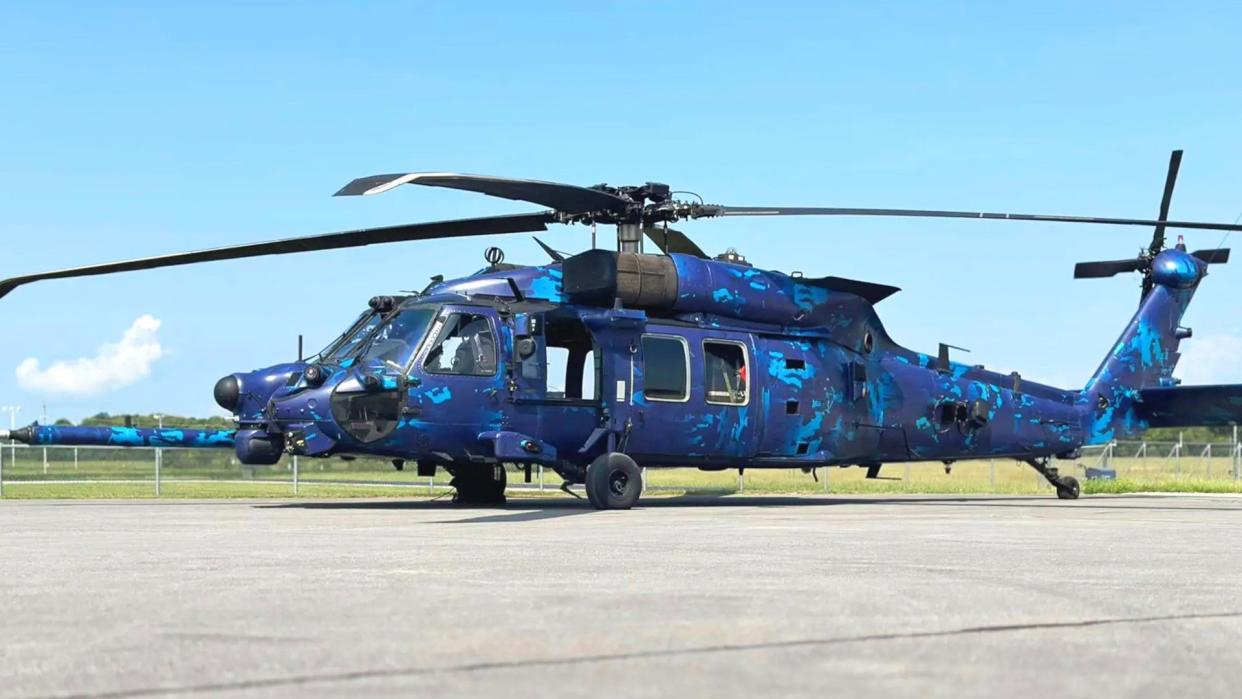
An MH-60M Black Hawk special operations helicopter with a highly unusual camouflage paint scheme recently visited a small airport in northern Alabama. The helicopter is also an example of the very latest known configuration of the MH-60M as used by the U.S. Army's elite 160th Special Operations Aviation Regiment (SOAR), better known as the 'Night Stalkers,' featuring a re-contoured nose, new particle separators over its engine intakes, and other upgrades.
Details about the helicopter's time at Pryor Field Airport, a regional airport just outside Huntsville in Alabama, are limited. The Pryor Field Airport Authority posted a picture of the MH-60M, as well as an MH-47G Chinook belonging to the 160th SOAR, on its Facebook page on September 21.
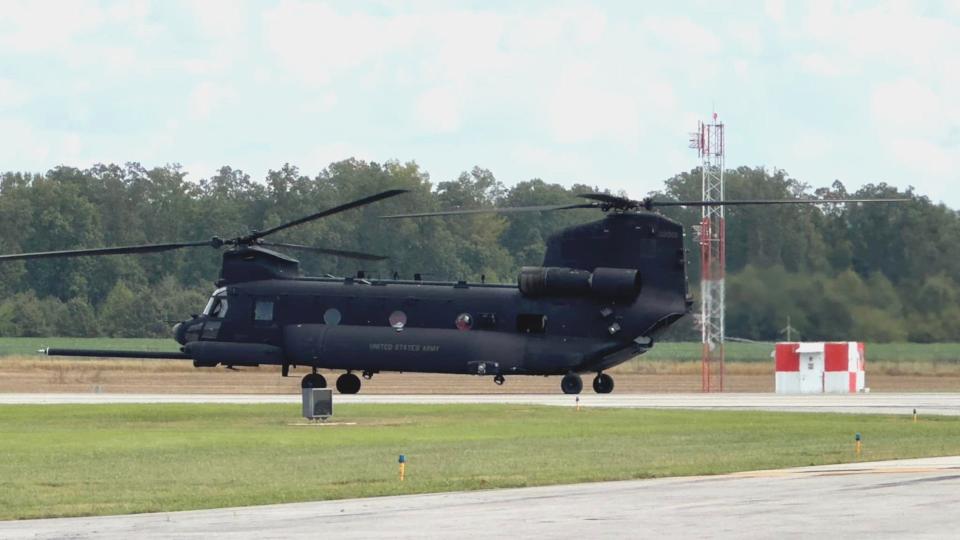
"We have enjoyed supporting our military the past two weeks at Pryor Field (DCU)," a post on Facebook accompanying pictures said. "Today was our last day being host to crews from Fort Campbell, Kentucky. Alabama is Aviation!"
The War Zone has reached out to Pryor Field Aiport and to the Army for more information.
Fort Campbell, situated some 140 miles to the northwest of Pryor Field, is home to the 160th SOAR's headquarters and the bulk of the entire regiment. The Army's Redstone Arsenal, which is a major hub for the service's aviation programs, among others, is also located in Huntsville.
What immediately stands out about the MH-60M in the picture from Pryor Field is its paint job. H-60 variants across the U.S. military are almost universally painted in overall dark olive green, gray, or black. There are some exceptions, but they are rare.
This MH-60M appears to be wearing a multi-tone blue (some parts look almost purple) camouflage scheme instead of the now iconic overall matte black paint seen on Night Stalker helicopters. A closer examination of the picture shows that certain elements of the helicopter, including parts of the cockpit windscreen framing and various antennas, are still black.
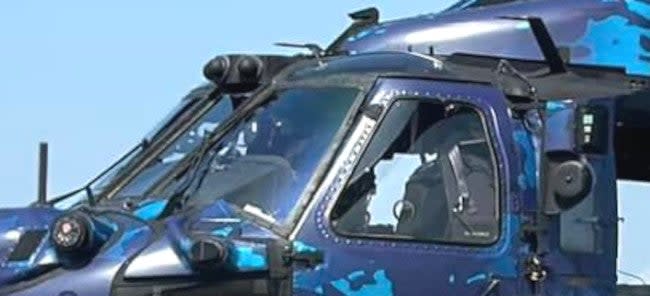
The purpose of this paint job is unclear. One distinct possibility is that this could be an experimental maritime scheme. The U.S. military has become primarily focused on preparing for potential high-end operations in the Pacific against China. The Arctic has also emerged as a major potential flashpoint in recent years.
American special operations forces, including the 160th SOAR, are expected to be heavily employed in response to major crises and contingencies in both of those regions, as highlighted by a recent capabilities demonstration in and around Alaska. Flight operations in those parts of the world can easily involve significant time over water and coastal environments. In addition, though the Night Stalkers go to work primarily after the sun goes down, where the black scheme on their helicopters is optimal, that might not always be an option during sustained major operations.
A number of countries around the world operate helicopters with blue-based maritime camouflage schemes. The Japan Air Self-Defense Force (JASDF) operates another version of the Black Hawk, the UH-60J, in a two-tone scheme.
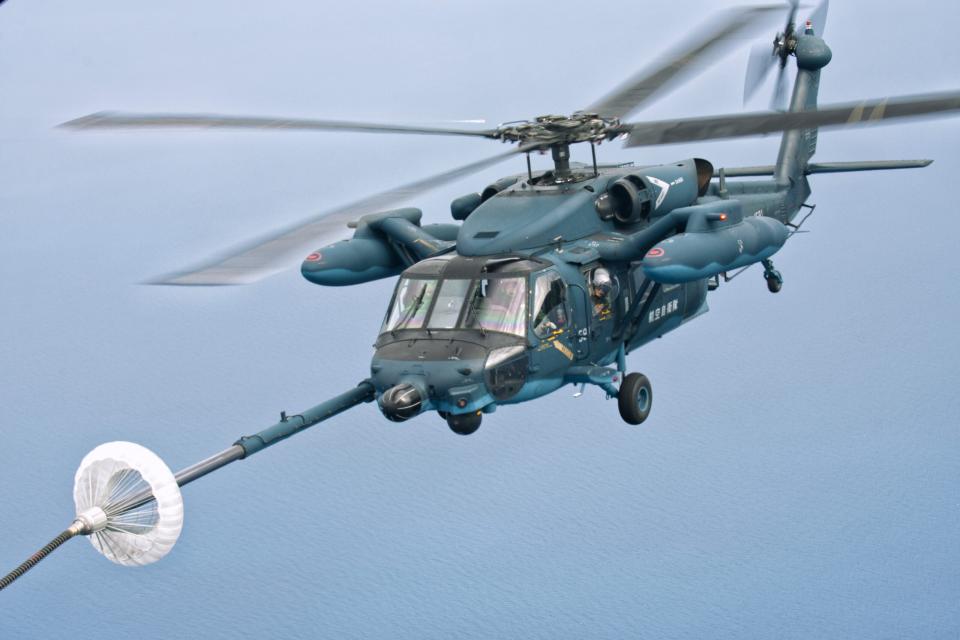
China and Ukraine are also notable examples of operators of other helicopters with blue-heavy, maritime-focused camouflage schemes.
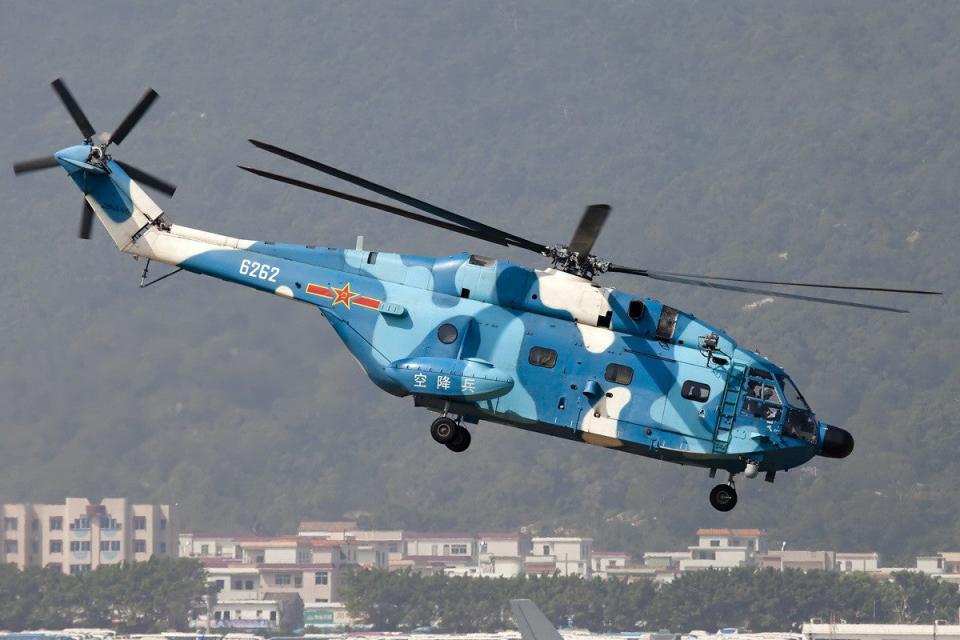
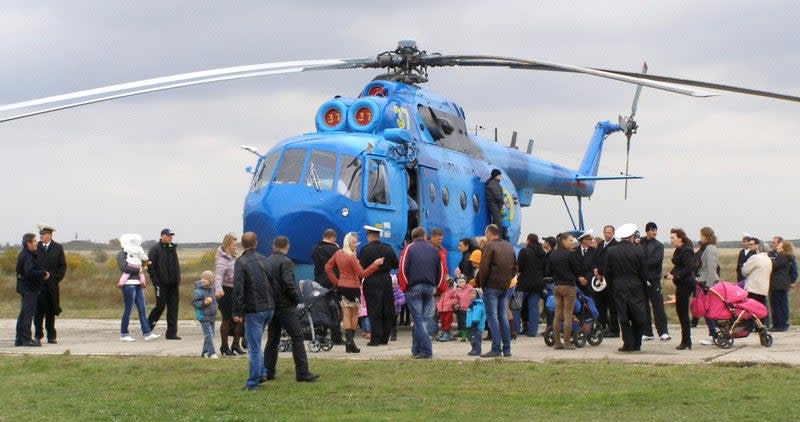
In particular, the Soviet Union and other countries historically aligned with it, and now Russia today, have long made use of camouflage schemes with a heavy blue component for fixed-wing aircraft and helicopters, in general. U.S. military aggressor jets, as a byproduct, often wear similar schemes.
The 160th SOAR does have a long history of conducting maritime operations in cooperation with the U.S. Navy. That being said, its helicopters are typically seen doing so while wearing the unit's standard black scheme.
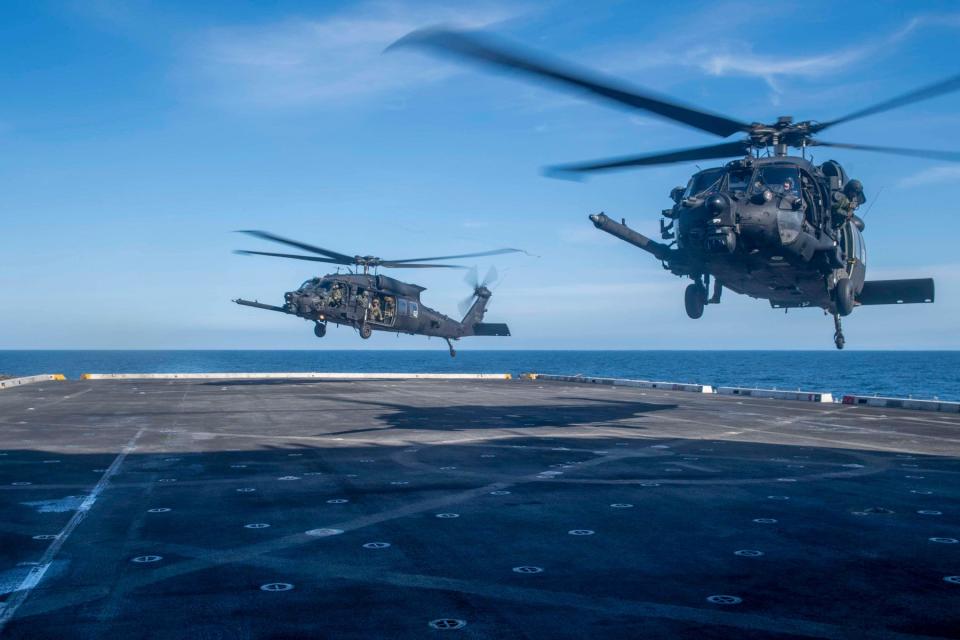
At the same time, the Night Stalkers are well known for experimenting with new and novel aircraft, weapons, and other systems, as well as tactics, techniques, and procedures. During the so-called Tanker War in the Persian Gulf in the late 1980s, the unit flew earlier MH-60As painted in overall gray, similar to the standard paint scheme for Navy Seahawks. So even just testing a new maritime paint scheme would be very much in line with what the 160th does on a day-to-day basis.
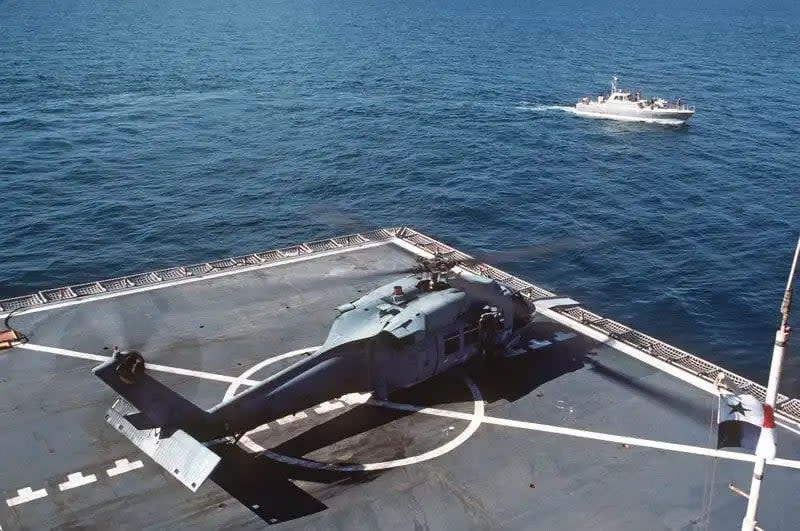
The camouflage scheme is also somewhat reminiscent of eye-catching, if less-than-practical camouflage schemes sometimes applied to helicopters, as well as other military hardware, for promotional purposes. However, this seems like a far less likely explanation for why this MH-60M is painted this way.
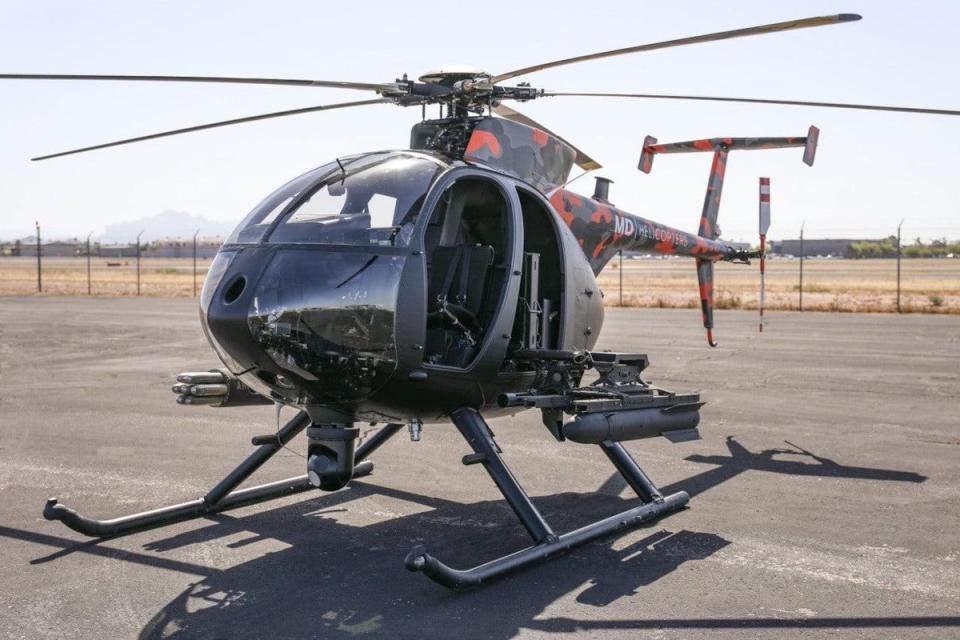
Beyond its paint job, the MH-60M seen at Pryor Field is in a relatively new configuration. The helicopter's nose has an all-new contour, most notably around the radar housing. The radar on this Black Hawk looks to be the new AN/APQ-187 Silent Knight radar, SKR, as well.
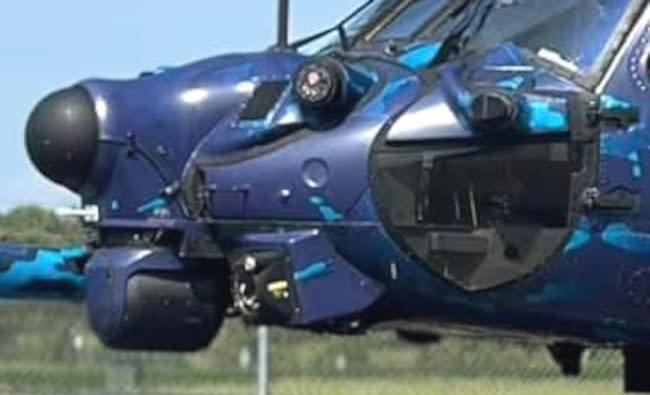
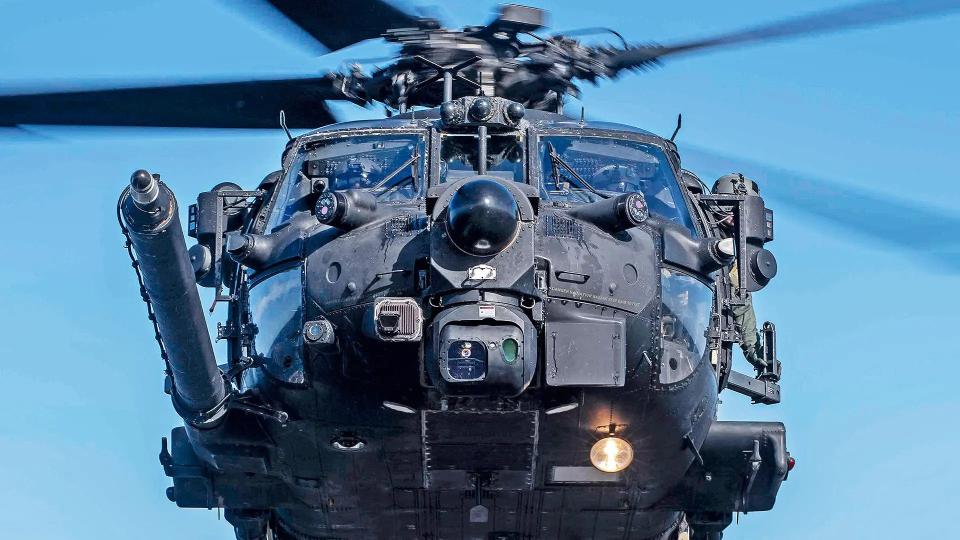
SKR is an advanced terrain following/terrain-following/terrain avoidance type that is also being integrated on Night Stalker MH-47Gs, as well as U.S. Air Force MC-130J Commando II special operations tanker/transports and CV-22 Osprey tilt-rotors. This is an absolutely critical feature on the MH-60M, as well as these other types, enabling extremely low-level nap-of-the-Earth flight operations, regardless of weather and at night. These flight profiles help pilots avoid enemy defenses and just being detected at all.
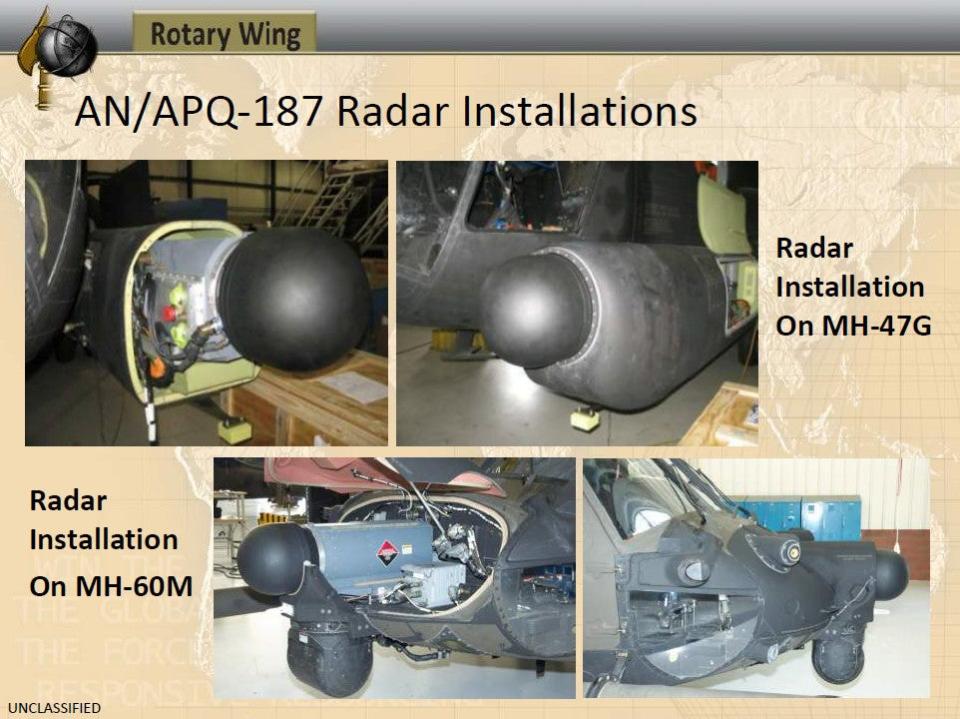
The design of the ventilation ports on the helicopter's nose on either side of the radar housing has also been revised.
The MH-60M also has new particle separators fitted in front of the intakes for its two turboshaft engines on top of the fuselage. Particularly useful for operations in deserts and other environments where brownout conditions are common, the separators help keep sand, dust, and other particulate matter out of the engines, which can lead to serious problems.
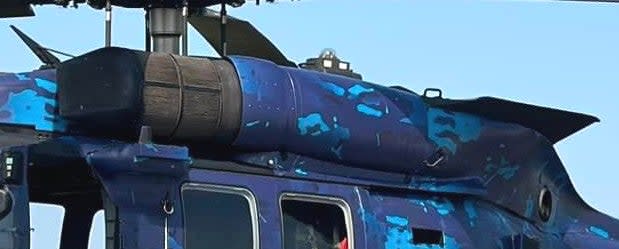
The Night Stalker Black Hawk that recently visited Pryor Field also features the Degraded Visual Environment Pilotage System (DVEPS). This system consists of multiple sensors mounted on the nose and helps pilots navigate safely when experiencing brownouts or similar conditions.

https://www.youtube.com/watch?v=YsBL1Q47K9A
Also visible on this MH-60M are its AN/ZSQ-2 sensor turret under the nose and elements of the Common Infrared Countermeasures (CIRCM) system on top of and below the fuselage. CIRCM is a directional infrared countermeasure system (DIRCM) that uses a pair of turrets to project laser beams into the seekers of incoming infrared homing missiles, blinding and confusing them, and throwing them off course.
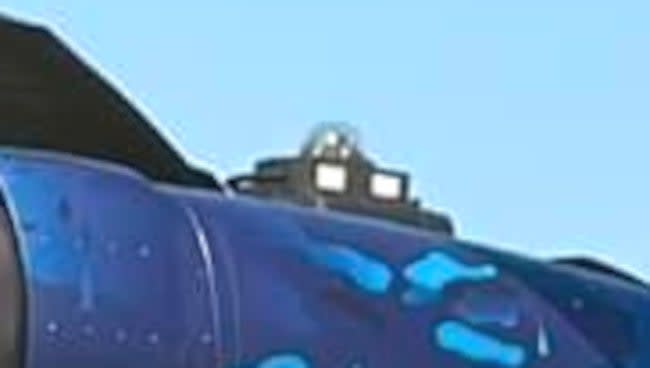
https://www.youtube.com/watch?v=poTn9fFGiDQ
There is also an array of other warning sensors, active jammers and other electronic warfare systems, and communications antennas at various points around the MH-60M's fuselage. Interestingly, the X-shaped satellite communications antenna found on the top of the fuselage above the cockpit on other configurations of these special operations helicopters has been replaced with an "Eggbeater" or "O wing" style one in this case. This is a feature also found on some of the ex-Army UH-60M Black Hawks now in service with the Federal Bureau of Investigation (FBI) to support its elite Hostage Rescue Team (HRT).
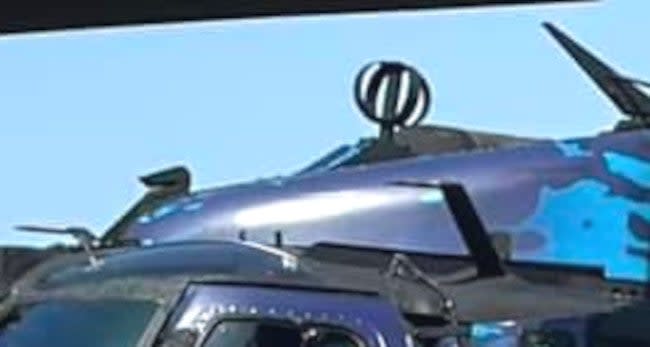
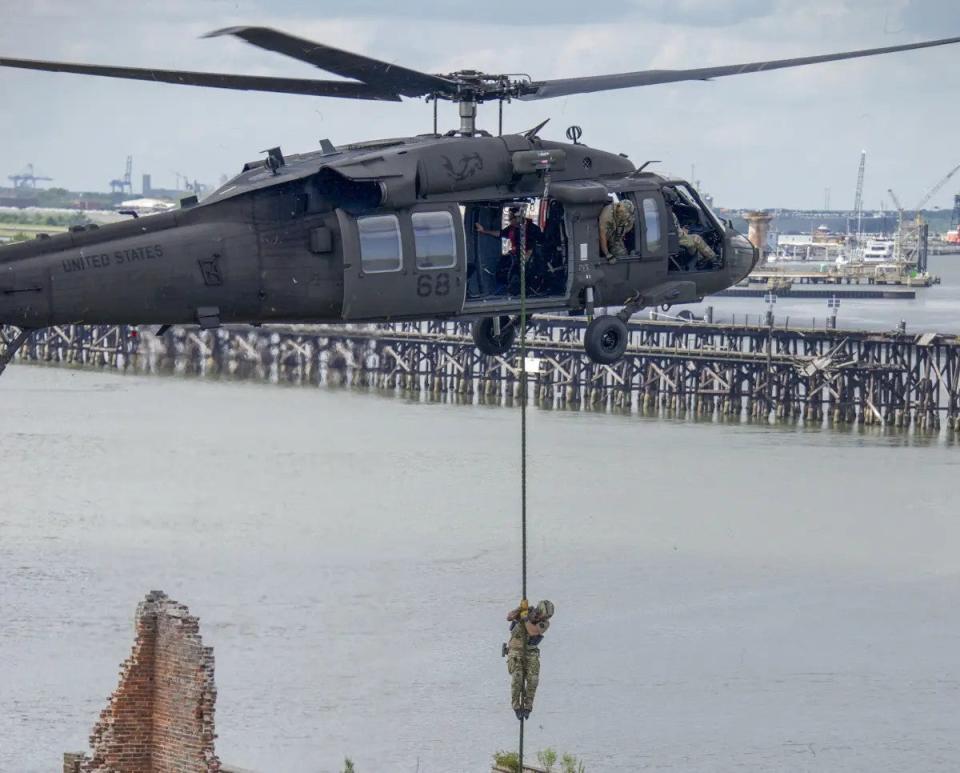
You can find more details about the extensive suite of specialized systems found on the 160th SOAR's Black Hawks in this recent War Zone piece.
As for what the elements of the 160th SOAR were doing at Pryor Field recently, it is not clear. The Night Stalkers do use civilian airports for training purposes and simply as stopover points during transit from one location to another.
In a training context, civilian airports, especially smaller ones, can offer a real-world opportunity to drill somewhere that more closely represents the kinds of remote and/or austere facilities with limited supporting infrastructure that U.S. special operations forces routinely make use of during actual operations. A prime example of this was the 160th SOAR quickly setting up shop in the chaos at the airport in Afghanistan's capital Kabul to support evacuation efforts in the wake of the Taliban takeover in August 2021.
https://twitter.com/KaiGreet/status/1428735772069441538
Airports like Pryor Field are also often just closer to populated areas where special operations units like the 160th SOAR regularly conduct so-called realistic urban training (RUT) for the same kinds of reasons. The U.S. military sees the likelihood of being called upon to operate in dense urban areas as only continuing to grow and purpose-built training facilities can only recreate these environments so well.
RUT events can often be controversial because of the information, or lack thereof, provided to local citizens before and during these exercises. As The War Zone has reported on multiple occasions, these training activities often cause concern and confusion despite their routine occurrence. Still, typically, locals do not come into direct contact with military personnel during these exercises and they pass without major incident. However, earlier this year, a botched mock raid on a hotel in Boston, Massachusetts, by U.S. Army special operators and the FBI did lead to an innocent bystander being detained.
Whatever the story is behind the MH-60M at Pryor Field Aiport in Alabma earlier this month, its visit has offered a glimpse at a particularly unusually painted example of one of these helicopters in its latest guise.
Contact the author: joe@thedrive.com

